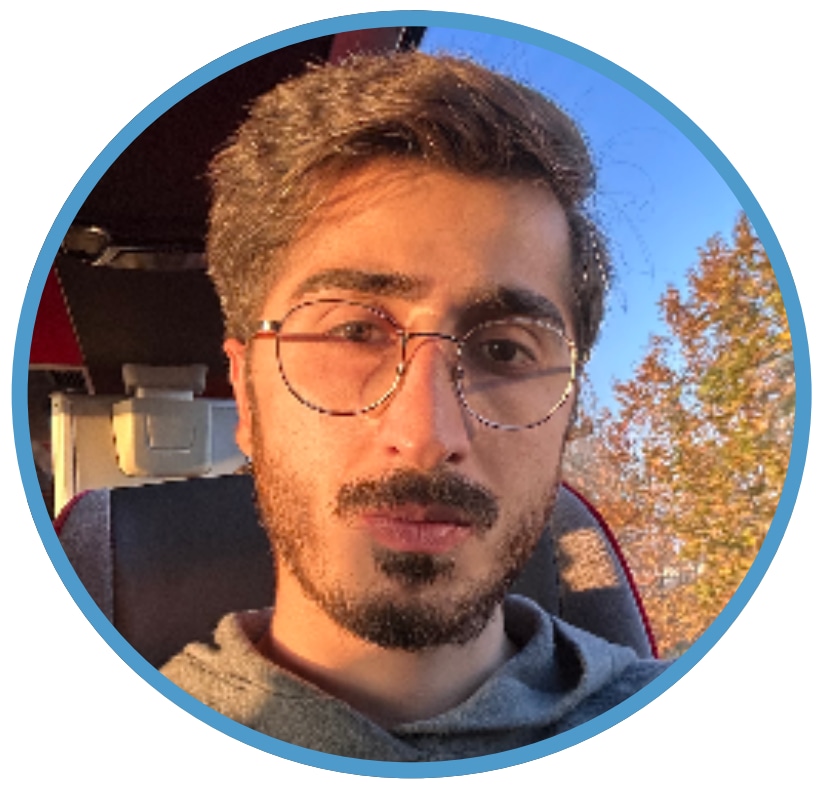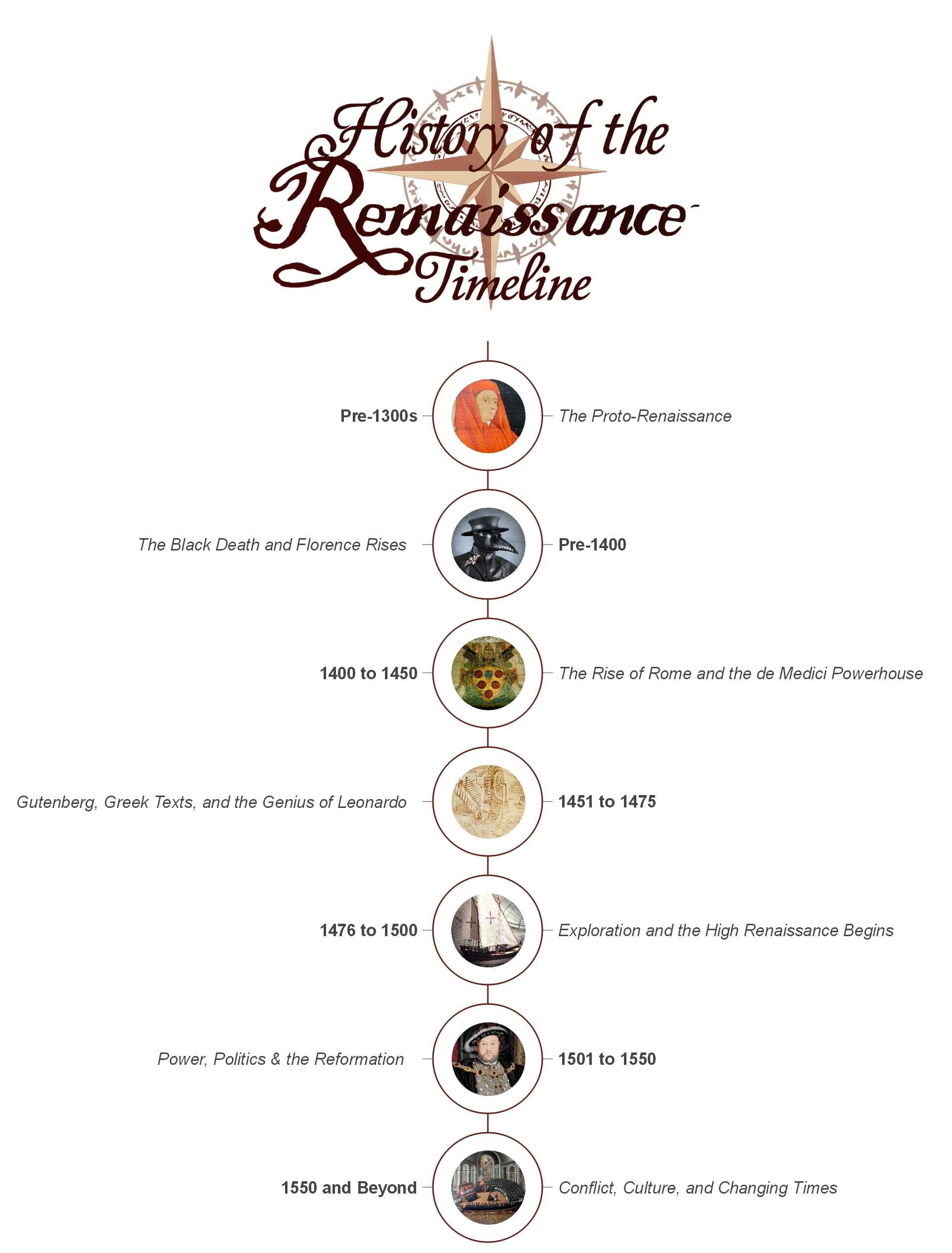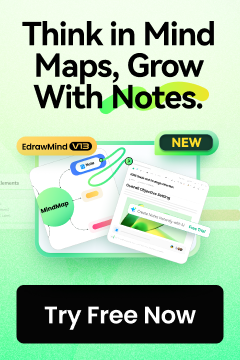When people hear "Renaissance", they often think of famous paintings and sculpted marble. But this era? It was so much more than that.
It was a time when old ideas were questioned and new ones exploded into the world. People started reading ancient texts, building cathedrals, inventing machines, and sailing into unknown oceans. Religion, politics, and science were all open to new thinking.
This timeline takes you through the major moments of that wild, brilliant time. You'll meet the legends, the rule-breakers, and the dreamers who made it all happen.
In this article
Part 1: Renaissance History Timeline (1300-1600)
The Renaissance. It was a period of significant cultural, artistic, political, and economic "rebirth" in Europe. It generally spanned from the 14th to the 17th centuries, with its peak in the High Renaissance (roughly 1495-1527). It began in Italy, particularly Florence, and spread throughout Europe, influencing various aspects of life. Science, art, literature, and even maps were transformed.
From da Vinci's inventions to Shakespeare's stories, the Renaissance was a turning point. Art, science, and thought all broke new ground, and nothing was the same again.
So, how did it all unfold? Let's take a look at the timeline and see how the Renaissance changed the world.
Pre-1300s: The Proto-Renaissance
Even before the Renaissance started, people were beginning to think differently and try new ideas.
In the early 1300s, Giotto di Bondone changed the way people created art. He moved away from the flat, lifeless style of the Middle Ages. Instead, he added emotion and made religious scenes look more real and human.
Around the same time, Dante Alighieri wrote The Divine Comedy. This epic poem took readers on a journey through the afterlife. It combined medieval religious beliefs with a new focus on human experience and personal meaning.
Francesco Petrarch, born in 1304, loved Roman authors and is often called the "father of humanism." His writings sparked a deeper curiosity about the ancient world.
Pre-1400: The Black Death and Florence Rises
The Renaissance didn't appear overnight. It grew from a stormy beginning.
In 1347, the Black Death hit Europe. Millions died. But strangely, the aftermath brought a kind of rebirth. Fewer people meant more opportunity. Cities like Florence started booming. Wealthy families, especially the Medici, began investing in culture, learning, and art.
Meanwhile, thinkers like Petrarch were obsessed with ancient Rome. He's called the "father of the Renaissance" for a reason. Around the same time, Boccaccio wrote The Decameron, a very human look at love, fear, and life during the plague. And let's not forget Dante. His Divine Comedy was more than poetry; it was a bridge from medieval thinking to something bold and new.
1400 to 1450: The Rise of Rome and the de Medici Powerhouse
Florence became the cultural heart of Italy. Artists like Ghiberti and architects like Brunelleschi started looking back at Roman ruins for inspiration. Donatello brought statues to life with emotion and realism. Masaccio's paintings popped with depth and perspective. Suddenly, art wasn't just religious - it felt human.
Meanwhile, Cosimo de Medici took over the family bank and became the real power in town. Scholars like Lorenzo Valla shocked the world by proving key Church documents were fake. In Rome and Venice, money poured into building grand cathedrals and funding art. The Renaissance was officially in motion.
1451 to 1475: Gutenberg, Greek Texts, and the Genius of Leonardo
In 1452, Leonardo da Vinci was born. He'd become a symbol of the Renaissance: artist, inventor, scientist, and dreamer.
Big shifts were happening everywhere. In 1453, Constantinople fell to the Ottomans. Greek scholars fled west, bringing ancient books with them. That same year, the Hundred Years' War ended, giving Europe a bit of breathing room.
But the real game-changer? The printing press. In 1454, Gutenberg printed the Bible using movable type. Ideas could now travel faster than ever before. Meanwhile, Lorenzo "The Magnificent" de Medici took charge in Florence. Under his rule, the city became a magnet for genius.
1476 to 1500: Exploration and the High Renaissance Begins
This era had everything from explorers, rebels, and artists to revolution.
In 1488, Dias rounded Africa. Four years later, Columbus hit the Bahamas. Vasco da Gama reached India in 1498. Europe was suddenly looking outward, hungry for discovery and riches.
But Italy had its drama. Savonarola, a firebrand preacher, briefly took control of Florence. He burned "sinful" art, but ended up excommunicated and executed. Meanwhile, French armies invaded Italy, kicking off years of war.
Art kept exploding. Botticelli painted Primavera. Michelangelo sculpted his early masterpieces. Da Vinci unveiled The Last Supper. And science? Luca Pacioli was teaching da Vinci math and the Golden Ratio. The world was getting smarter.
1501 to 1550: Power, Politics & the Reformation
By 1500, the Renaissance had spread across Europe, and things got political.
Popes like Julius II turned Rome into a construction site, funding artists like Michelangelo and Raphael. Across Europe, kings rose to power: Henry VIII in England, Francis I in France, and Charles V in Spain. They built empires and fought for control.
Then came the big spiritual shakeup. In 1517, Martin Luther nailed his 95 Theses to a church door. That act cracked the Catholic Church wide open. The Reformation was here, and Europe would never be the same.
Still, creativity didn't stop. Michelangelo painted the Sistine Chapel. Da Vinci gave us the Mona Lisa. Machiavelli wrote The Prince, Erasmus poked fun in Praise of Folly, and Thomas More dreamed up Utopia. Even science joined the revolution. Copernicus said the Earth wasn't the center of the universe, and Vesalius mapped out the human body like never before.
1550 and Beyond: Conflict, Culture, and Changing Times
By the mid-1500s, Europe was exhausted from fighting over faith. In 1555, the Peace of Augsburg let Catholics and Protestants live side by side, sort of.
Charles V retired in 1556, handing Spain to his son Philip II. England got a new queen, Elizabeth I, and entered its own Golden Age. But peace didn't last everywhere. The Battle of Lepanto in 1571 saw Christian navies fight the Ottomans. In France, the 1572 St. Bartholomew's Day Massacre killed thousands of Protestants in one night.
Despite the chaos, the Renaissance spirit lived on. Isabella Whitney became the first Englishwoman to publish secular poetry. Mercator gave us modern map projections. Montaigne created the personal essay. And Shakespeare wrote Hamlet, changing theater forever. And Cervantes brought us Don Quixote, a novel unlike anything before.
Part 2: How to Make the Renaissance History Timeline in EdrawMind?
The Renaissance can be a complicated period on paper. However, you can make it easy to understand with an engaging and aesthetically pleasing timeline. And with EdrawMind, making timelines and mind maps is as easy as it gets.
So, let's see how you can create the Renaissance history timeline using EdrawMind:
Step 1: Sign in & Get Started
- Download, install, and launch EdrawMind.
- Or try EdrawMind online on your browser.
- Sign in by creating a new Wondershare account for free. Alternatively, use your socials to quickly log in.
- Click the New Mindmap button on the homescreen to open a new file.
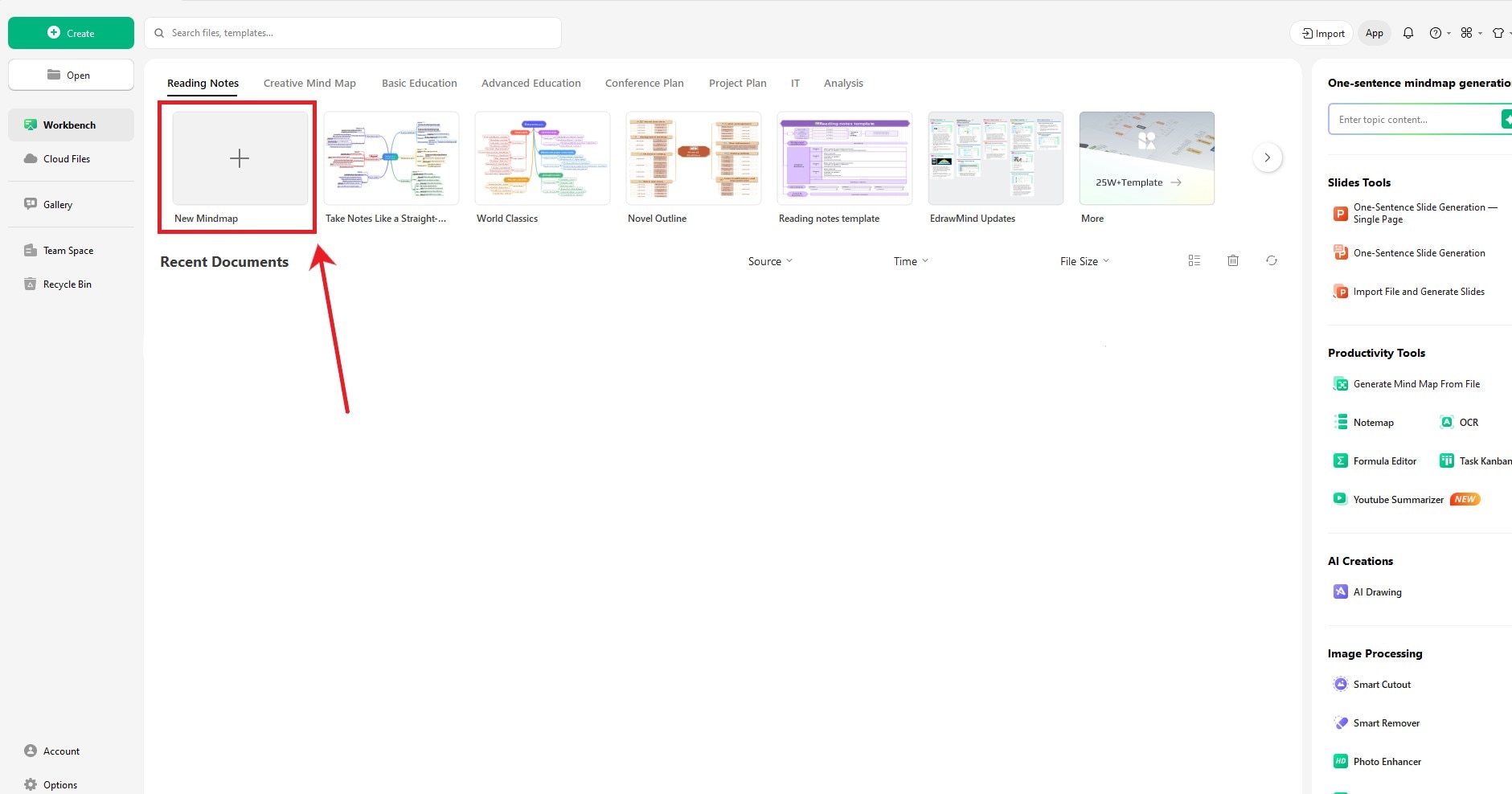
Step 2: Set the Right Layout
- Click the Main Idea and select Layout from the floating menu.
- Pick the Timeline (down) from the list to change the layout.
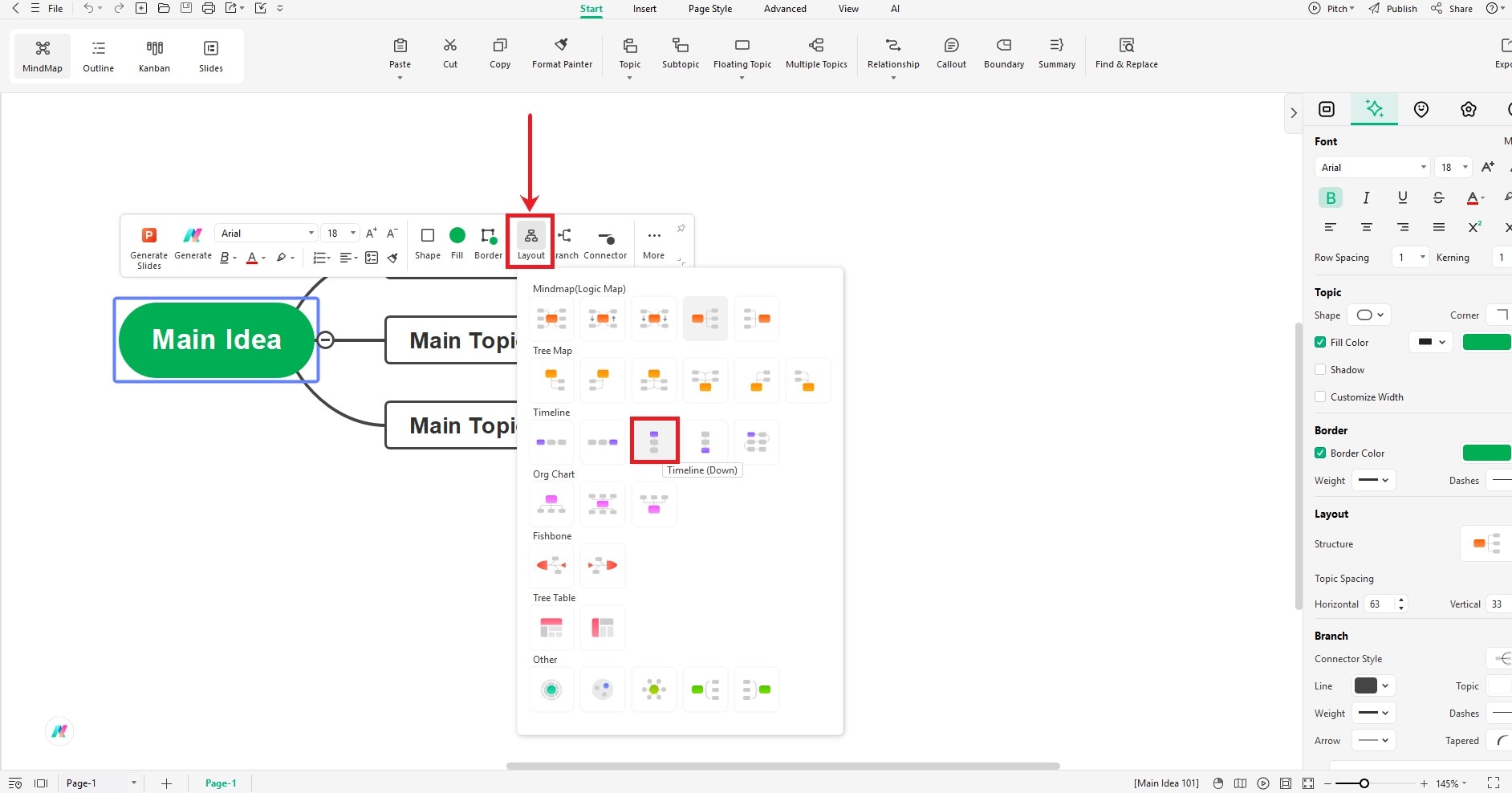
Step 3: Expand the Timeline
- Select the Main Idea and click Topic from the top menu bar. A new entry will be added at the bottom.
- Now, select a Main Topic and click Subtopic from the top menu bar. A new subtopic will be added to the respective entry.
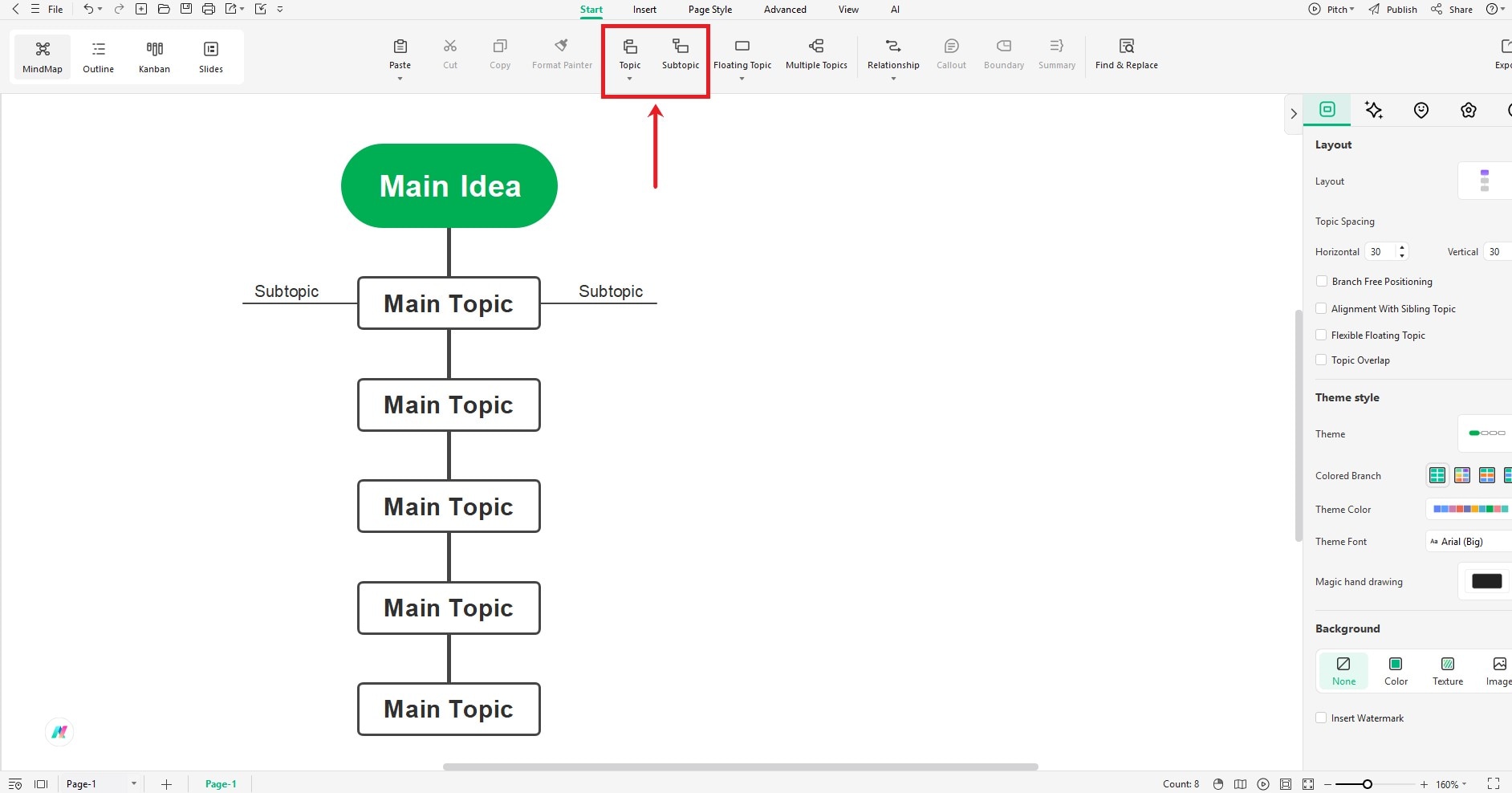
Step 4: Change the Timeline Design
- Select the Main Idea or a topic to customize its settings from the floating menu and the right toolbar.
- To change text, click any entry and start typing to enter new content.
- Use the floating menu to customize font size and properties.
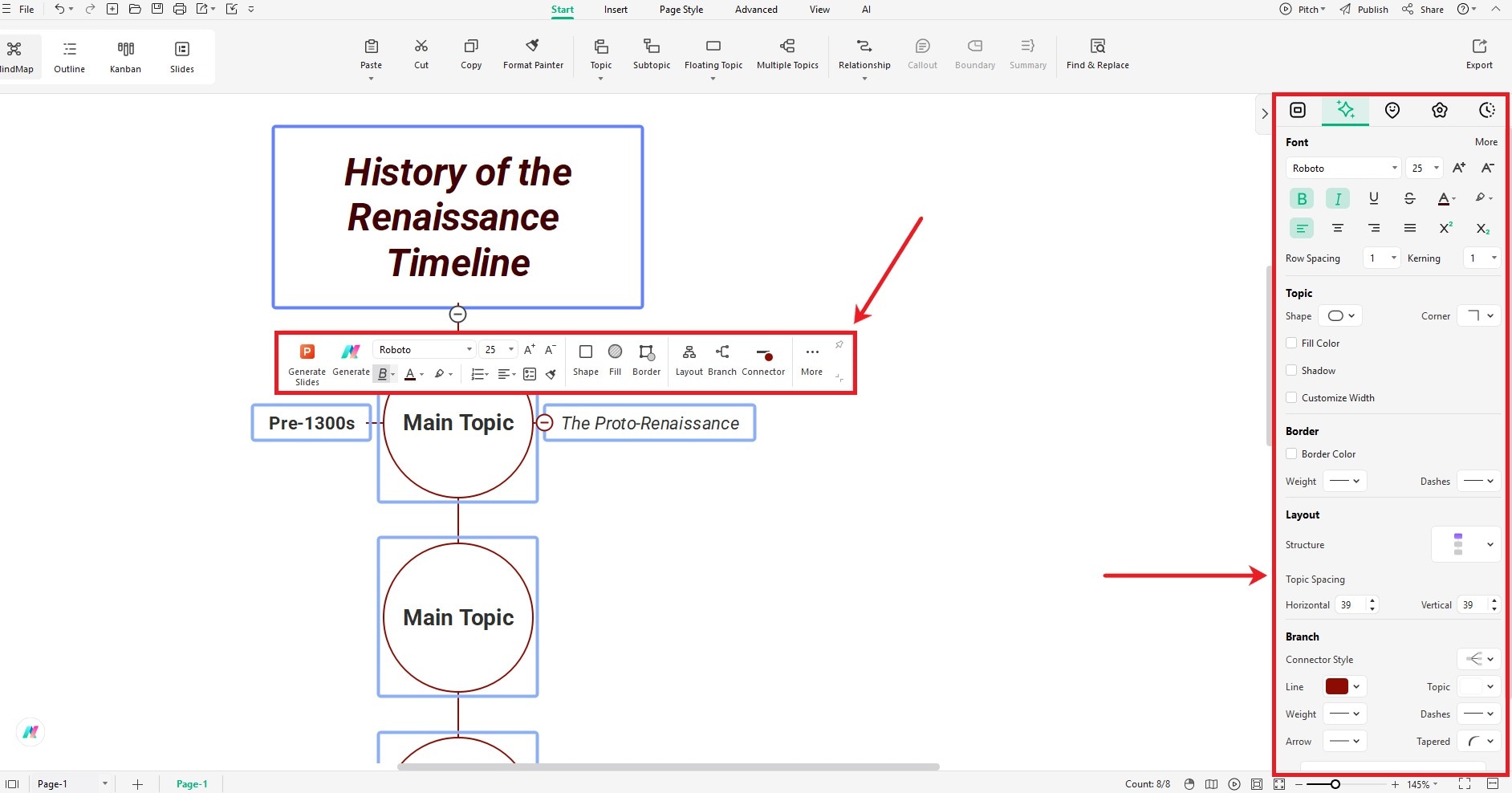
Step 5: Insert Images
- Copy an image and paste it into EdrawMind.
- Drag and drop the picture into a topic.
- Use the floating menu and the right toolbar to customize image settings.

Step 6: Save or Share
- Everything finalized? Click the File button at the top-left corner.
- Select Save to download the file on your device.
- Click Share to get a shareable link or send the file via email.
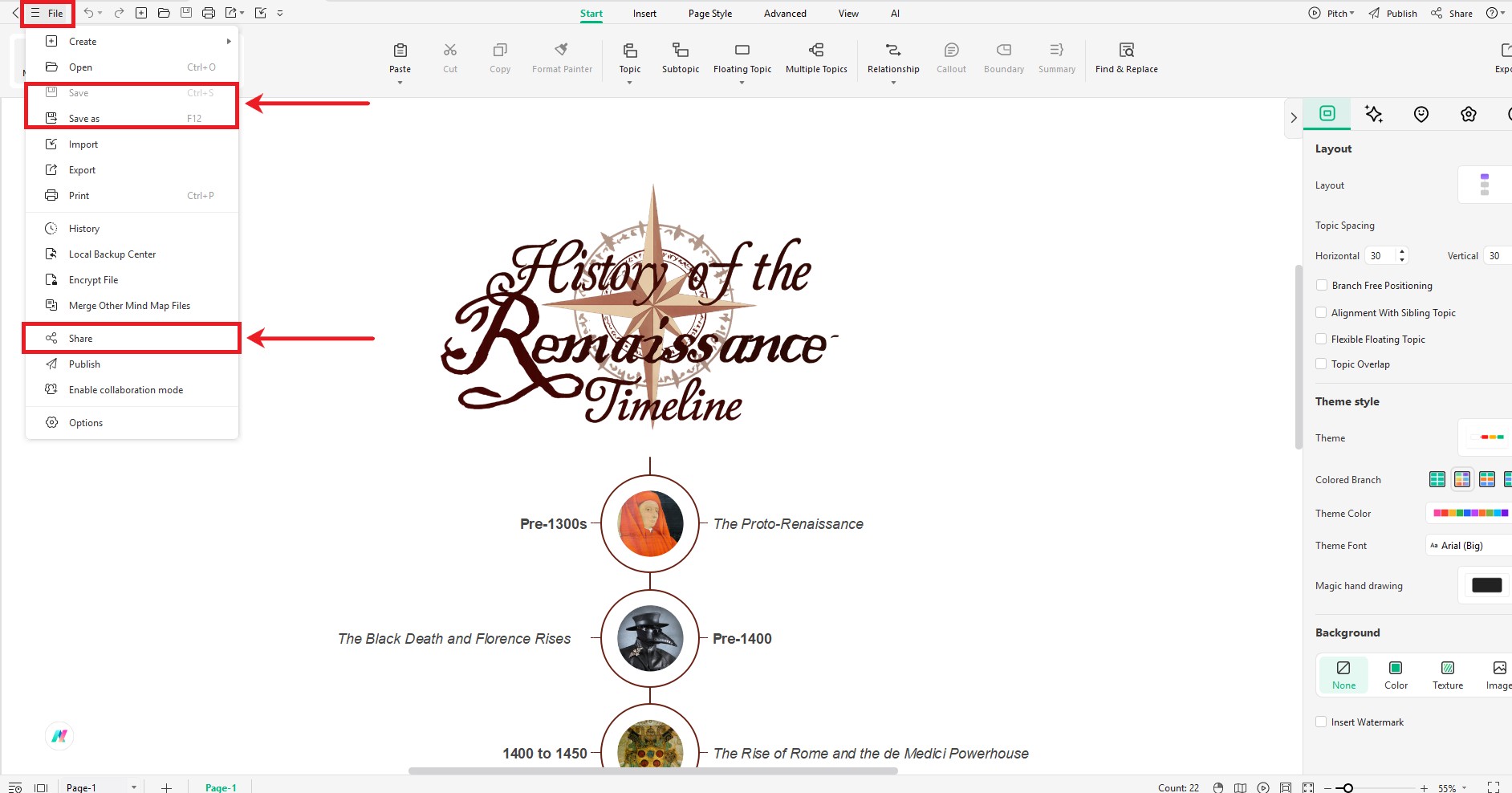
Wrapping Up the Renaissance
So, when did the Renaissance end? There's no exact date, but by the early 1600s, things were clearly changing.
A new style called Baroque art became popular. Religious fights and wars became more intense. Scientists began asking bigger and tougher questions. Galileo, who came shortly after, used a telescope to show that Copernicus was right; the Earth moves around the Sun. The Enlightenment was coming. But it never would have happened without the Renaissance first daring to ask: What if there's more out there?
If you want to explore how one era connects with the next, try sketching it out with EdrawMind. It's a great way to connect the dots; if you're into that kind of thing.
